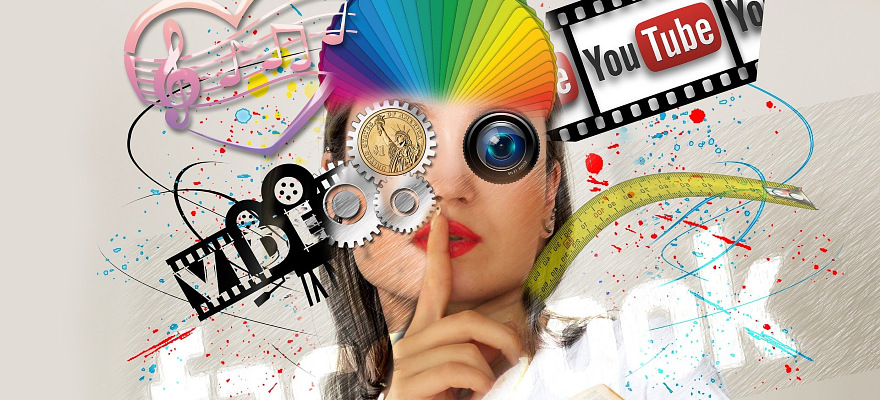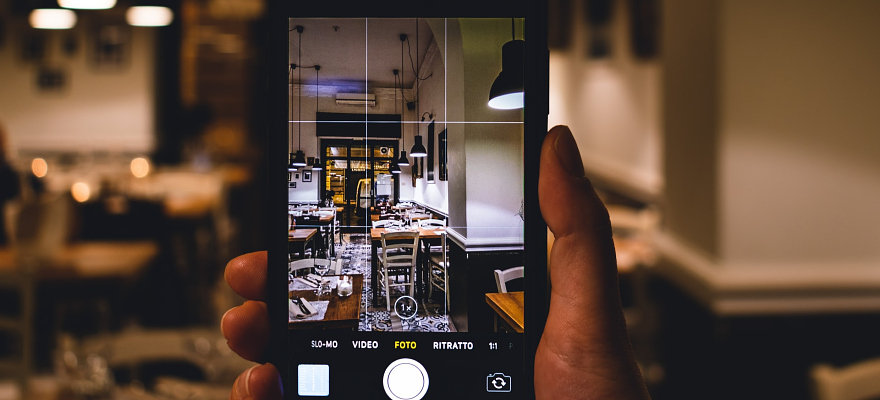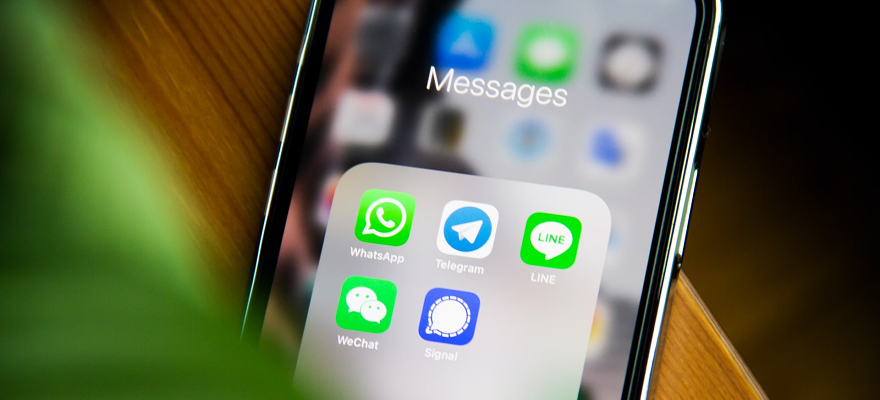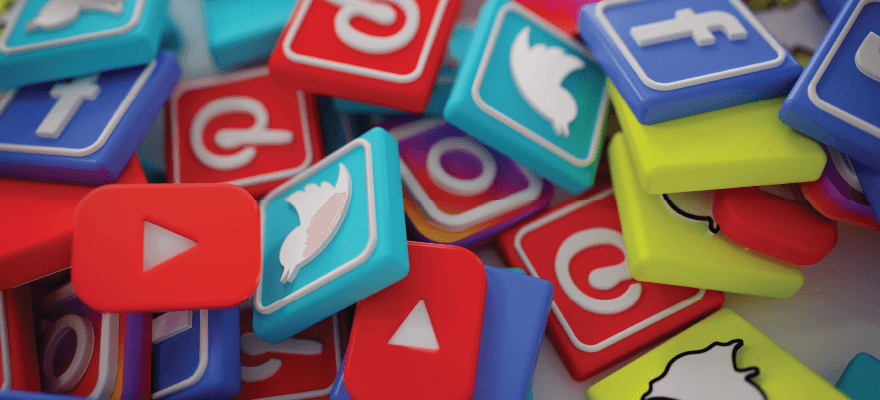One million active users join various social media platforms every day – nowadays, there are about 3.03 billion active users worldwide. It’s criminal to ignore such a large audience, and brands already know that – they are not paying $40 billion for nothing. That’s just money spent on social media advertising, not mentioning investments in other social media marketing tactics.
Social media keeps changing and evolving – and social media marketing has to grow with it. There have already been a few major incidents this year that will undoubtedly affect social media marketing, the Cambridge Analytica scandal, and the introduction of GDPR, to name some. So, with the year 2018 half gone, let’s look at some emerging trends that you need to hop on right now.
Social listening
What is social listening?
Simply put, social media listening is an act of using a tool to listen to what is being said about a brand (or any other keyword or set of keywords) across social media and the web.
It’s kind of like Google Alerts on steroids – and in this case, steroids are various handy features such as analytics, sentiment analysis, influencer search, and many others.
Why does it matter?
Social listening is becoming a must for any brand out there. It’s no longer enough to monitor your @ mentions. According to a study by Brandwatch, 96% of the people that discuss brands online do not follow those brands’ owned profiles. So it’s highly probable that you’re missing about 90% of conversations revolving around your brand.
What’s more, if you fail to respond to a mention, consumers will bail in 78% of the cases. This means that companies need to go beyond their channels and monitor those unbranded conversations to gain valuable insights and manage brand health.
But it’s not just about tracking the mentions of your brand – you can use a social listening tool for almost any aspect of your business, from product design to customer service to lead generation – you name it! The limit is your imagination. So if you’re not doing social listening yet, now would be a good time to start.
How to get started?
As I mentioned above, there are many ways to apply social listening.
Some of them may be prompted by the tool’s functionality. For example, the Awario social media listening tool identifies mentions with negative sentiment, which can be helpful for customer support or crisis management. It also shows you the most prominent social media influencers in a relevant field, so you can use this information for your influencer marketing campaigns.
The great thing about social listening is that you can customize the search process to suit your every need. Let’s say you want to keep an eye on the industry you’re in – you set up an alert containing keywords relevant to this industry.
Need to find new leads? Set up an alert containing phrases often used when people seek advice about your type of product. Just do a little bit of research and make sure to choose a tool that has a flexible search mode, something like Boolean search mode.

Influencer marketing
What is it?
I mentioned above that a social listening tool could help you find influencers, and I hope you got excited about that because influencer marketing is all the rage right now. If you haven’t dived into influencer marketing yet, you might think it’s all about celebrities plugging something with a corny tagline, but I have to tell you – influencer marketing has come a long way since Michael Jordan was selling sneakers.
Imagine a situation: you need to choose a powerful SEO tool for link building. There are so many on the market, and you don’t have much experience in this particular subject to be sure that you’ll make the right decision.
However, a happy coincidence occurs – there’s this blogger you follow on Twitter who writes about useful SEO hacks. You trust his advice, so you’re naturally curious what kind of tools he uses, so you go to his Twitter to find out. Bingo – we have an influencer.
This is a prevalent situation. According to a survey by Collective Bias, 30% of consumers are more likely to buy a product recommended by a non-celebrity blogger. Consumers can relate more to these influencers and value their opinions more than that of celebrity influencers.
Why does it matter?
According to the report from 2016, businesses make $6.50 for every $1 spent on influencer marketing, and 67% of marketers promote content with the help of influencers.
Many brands name influencer marketing as one of the most effective tactics they use, and if you think about it, it’s only natural. If you like the content of a person you follow, you’re very likely to appreciate the same products they like. It’s like having a ready-made target audience!
How to get started?
The first step is, of course, to find influencers. You can do it manually by looking around and seeing who is producing content relevant to your product and has a following. Or you can use a social media listening tool to help you identify the influencers.
Then you need to establish a relationship with an influencer. This might seem like an optional step since it takes a bit of time, but I think it helps you to ‘win them over’, so to say. It’s kind of a courtship period when you learn more about them and their content, ‘like’ and retweet their posts and engage with them in the comments.
After that, you can message them directly or send an email offering a collaboration. Find out their work process, how much creative freedom they need, etc. Depending on their reach, you can negotiate different conditions: a fixed fee, free products, a beta version of an unreleased product, some percent from the profit, or just cross-promotion.
Also, keep an eye on your social media stats after the job is done – analyze mentions to see what worked and what didn’t to use this information in the future.

User-generated content
What is it?
As social media use is growing, the world becomes smaller, and word of mouth is once again the most effective marketing tactic– but now it has moved from a market square to the Internet.
In its most simple form, UGC is any unpaid content created by your audience. From there, you can go to pictures, videos, personal stories, blog posts, etc.
Why does it matter?
The times when a pushy pitch was enough to sell something have long gone (if they ever were here at all). Nowadays, consumers are looking for an authentic connection; they want to be a part of a community of like-minded people, not just another line in an annual report. Luckily, social media makes it very easy to create communities, and UGC is one of the best ways to do it.
Take a look at Hootsuite: their #IWorkFromHere campaign, in which they encourage their clients to share pictures of their workplace, got them 2.2 million more daily views, which translated into more than 2,000 new mobile users.
According to ComScore, brand engagements rise by 28% when consumers are exposed to a mixture of professional marketing content and user-generated content.
How to get started?
First things first, you need to identify what platform would be the most suitable for your campaign. Select something popular among your customers and suitable for the type of campaign you’re planning.
Offer some kind of reward. As willing as people are to share their opinions on the Internet, most of the time, they need a little encouragement: a discount, a free service, or anything else you might think of.
Be creative. Take this Hootsuite example mentioned above – their product is an app, so it would be difficult to promote it using visual content. However, they knew that it is effective on social media. So they came up with an idea that combined beautiful pictures with topical content that emphasized one of their features (a mobile app).
But not too creative. When brainstorming your campaign, be reasonable – your ideas should not require too much effort from the customers, especially if the reward is relatively modest.

Messenger marketing
What is it?
So you know how you get all these emails and occasional text messages from brands trying to sell you something? Well, messenger marketing is the next step, and if you just thought “But I hate those emails!” – messenger marketing is different.
Studies show that messaging apps have open rates, read rates, and CTRs as much as 10X those of email and SMS. So let’s see why it actually works.
Why does it matter?
Three qualities distinguish messenger marketing from traditional email and SMS marketing, making it more effective.
First of all, you get messages voluntarily. Before sending a message, a marketer will need permission. Moreover, if you ever change your mind, it’s much easier to opt out — we all know how annoyingly tricky it can be to unsubscribe from a newsletter.
As someone who works in marketing, you might be thinking that it doesn’t sound great, but I can assure you – this will filter out uninterested people and keep valuable prospects.
The nature of messenger apps makes your message short and straight to the point, which is greatly appreciated by customers who are used to fast content consumption.
We’ve already talked about the importance of authenticity for a brand – customers want to feel and engage rather than just buy. With messenger marketing, you’re not just sending out a plain notification, you’re starting a conversation and giving the customer a chance to respond and make a connection. Relationships are the most valuable thing a brand can have, and messenger marketing allows you to build them efficiently.
How to get started?
Obviously, the first thing you’ll need to do is find people who want to receive messages from you. You can do that by integrating links into your existing marketing channels such as websites, digital ads, social media pages, or even billboards and print ads. You can also run a campaign specifically dedicated to bringing more people to start messaging with you.
Choose the tone and writing style appropriate to your brand and your audience. Don’t forget that you’re not just shouting your message into the great abyss – respond, communicate, engage and have fun with it. Message marketing can be demanding, however, you can use chatbots to help you out.

Ephemeral content
What is it?
Hiding behind such a poetic word, ephemeral simply describes any visual content that’s not permanent. By contrast to every marketer’s dream to create content that will last forever, ephemeral content is there for a limited number of hours.
Again, you might be saying “That doesn’t seem like a good idea”, but the numbers tell the opposite – Snapchat and Instagram stories have almost 450 million daily users combined.
Why does it matter?
The short-term life span creates a sense of urgency or, in other words, FOMO (fear of missing out). The fact that your content disappears in a day makes people feel excluded if they miss your story or snap.
Moreover, this type of content allows viewers to react almost immediately, making them feel seen. Not only do they feel respected by your company, but they get even more engaged in the present moment. It makes the connection between a brand and a viewer more genuine and authentic.
How to get started?
There are some peculiarities with every platform. For example, Instagram Stories are perfect for a call to action since you can put links in your stories. Snapchat is good for showing the behind-the-scenes of your business and building a community, or you can use it to get user-generated content – the minimal requirements for content creation make this platform perfect for UGC campaigns.
So those are the hottest trends that will shape the near future of social media marketing. That only leaves you with one decision – start experimenting and see which one fits your organization’s profile!
Originally published on SiteProNews


